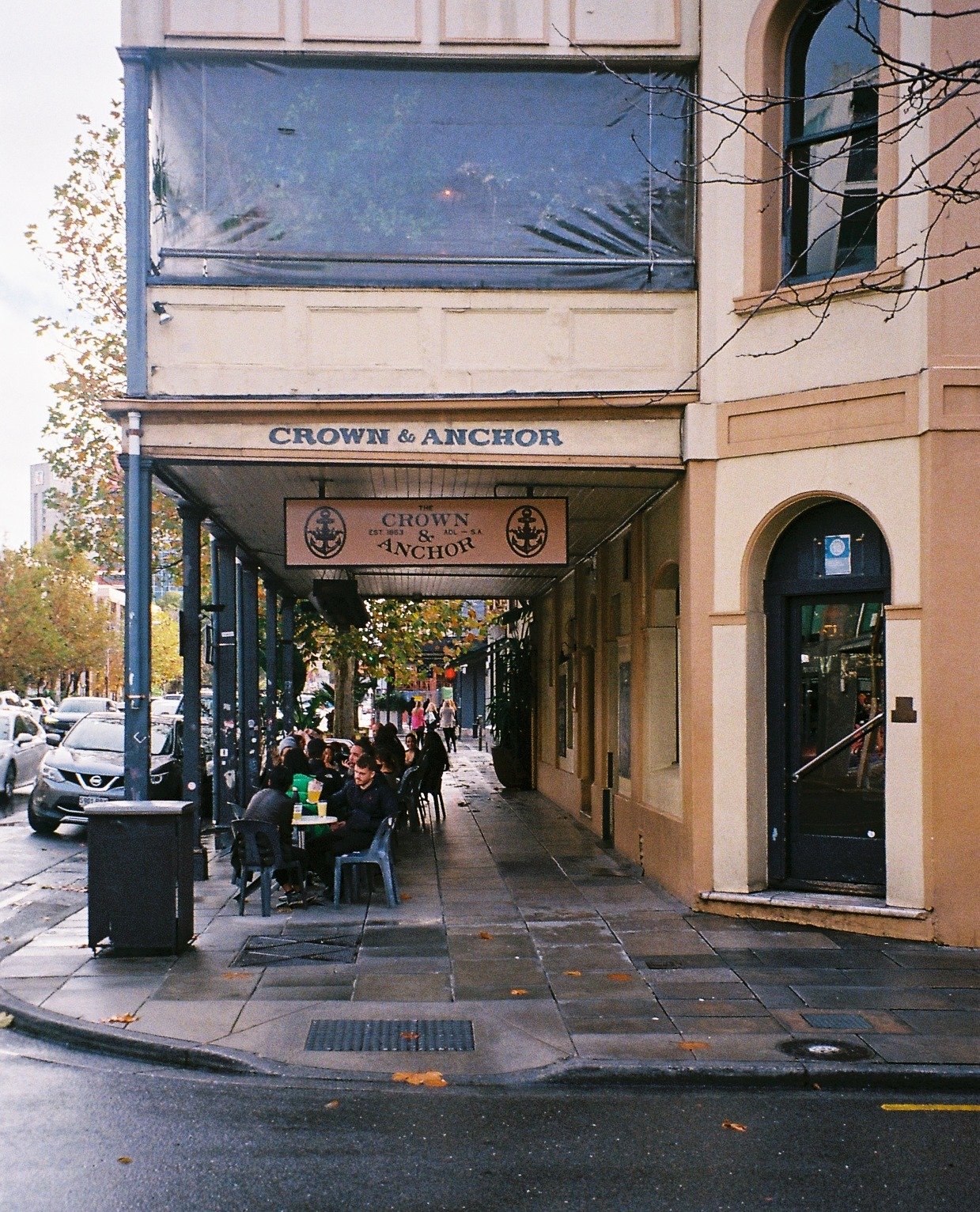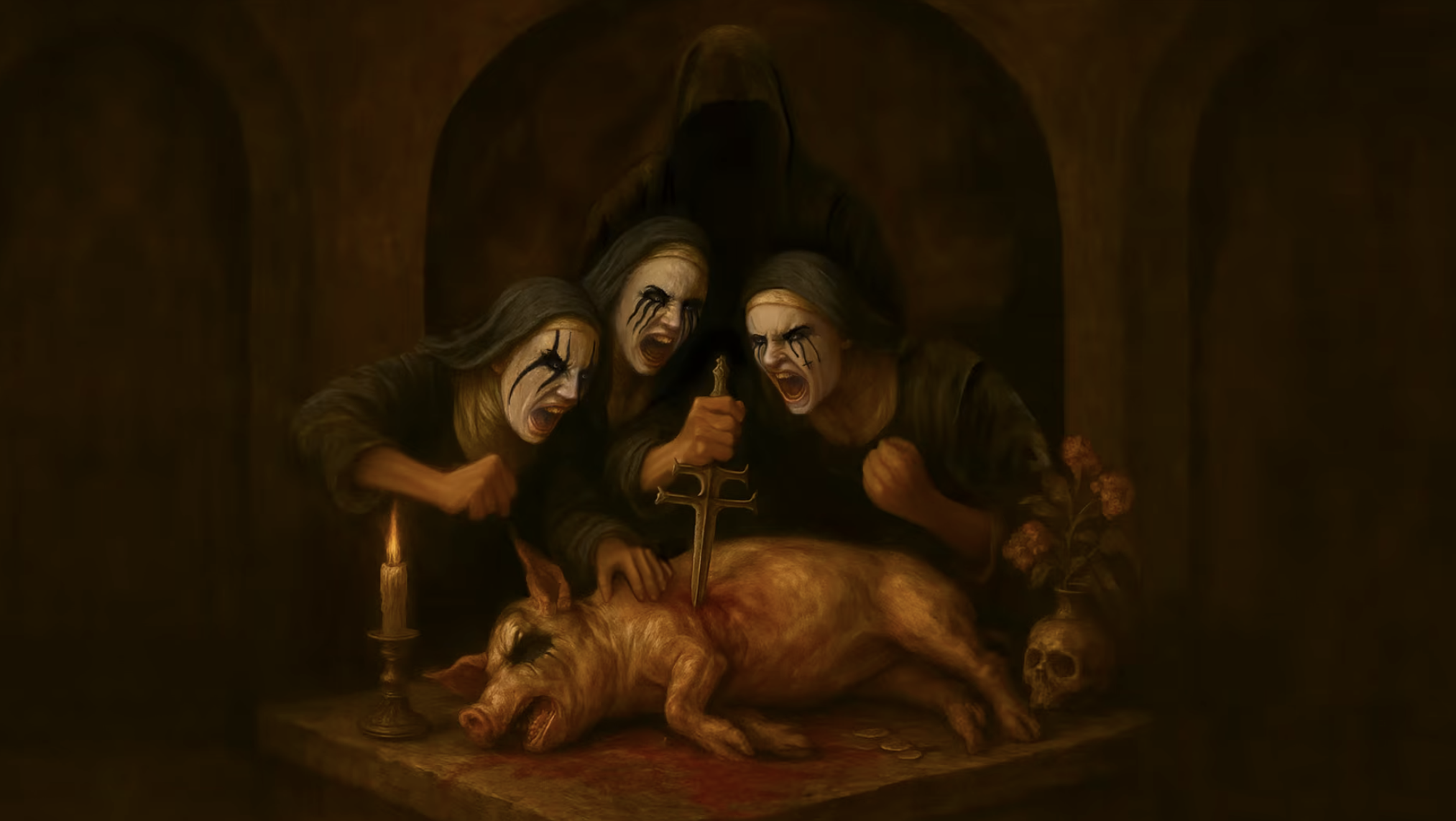THE INS & OUTS OF THE CRANKER DEVELOPMENT SITUATION
All you need to know about what’s going on with the Cranker.
This morning, the official Save The Cranker petition clocked over 16,000 signatures – an impressive effort, one that shows the public's adoration for the heritage-listed watering hole and its significance to the live music community.
Following a successful city council meeting last night where Deputy Lord Mayor Keiran Snape passed the motion for the Lord Mayor to write to state premier Peter Malinauskas and other parliamentary representatives, and further news that the Greens will introduce a motion in the State Parliament to oppose the Cranker development, we’ve broken down the nuts and bolts of the situation unfolding.
Who Said What at The Council Meeting?
More than 35 supporters of the Save the Cranker campaign headed to Adelaide Town Hall yesterday evening to watch the motion moved by Deputy Lord Mayor Keiran Snape unfold. He opened by saying the Crown & Anchor is “an important part of our built heritage here in Adelaide” and that as a city, we must be careful that we do not fall into “rudimentary facadism”.
“The Crown & Anchor is so much more than just bricks and mortar,” he said. “It is the heart and soul of our city and the heart and soul of our live music scene, providing many up-and-coming musos and bands the opportunity to perform, grow and reach new audiences.” He highlighted how almost everyone has their own ‘Cranker’ memories and that, as a UNESCO City of Music, the “lived and living culture that the Cranker espouses is, in one word, priceless.
“This motion, at its heart, asks the Lord Mayor to write to the premier and ask for intervention from a state government to set up and protect the Crown and Anchor, and to also change the planning code so that beloved venues like the Cranker are protected for their cultural heritage going forward.”
The motion was seconded by Councillor Janet Giles, who is also part of the UNESCO City of Music board. She noted the worrying correlation between developers and empty live music venues, highlighting the Colonel Light Hotel and the King’s Head, which has been approved for a 16-storey hotel development by SCAP.
“At the time, the proponents of the development said that their intention was to keep the King’s Head operating as a live music venue and reinvigorate its social offering,” she said. “That was July 14, 2022, and… nothing’s happened on that site since. It’s a corner of crickets, in terms of live music.
“I’m concerned there may be a trend… in relation to developers and the way they view these amazing pubs that sit on corners right around our city.”
Against the motion was Councillor Henry Davis, who noted his experience with heritage applications through his previous position as a councillor for the City of Burnside.
“Writing to develop options to actually puts more of an onus on heritage owners [and] has a complete opposite idea of what you’re trying to do – which is trying to make these types of venues… commercially viable,” he said.
He mentioned that the model London applies to its heritage buildings is something Adelaide should “be looking at here” and that the motion delivers “absolutely nothing”. Davis continued to state that the motion puts “more onus on heritage buildings” making it “harder for venues” as it “reduces the value of the land and makes it harder to hold and… less likely that they’ll be able to invest in the property.”
“I won’t be voting for this because it doesn’t do anything apart from writing a fuzzy letter to the premier, which everyone here knows will go nowhere, and if you do, come back in six months and… see what actual policy comes out of it,” he said.
Councillors both for and against took turns supporting the cause or raising their concerns before Snape rounded out the motion. “To my understanding, the Crown & Anchor is running a very successful business model and has a lot of community support… which goes to show what’s happening is working,” he said.
“I don’t think providing heritage protections, which is only part of the motion, is going against commercial aspects.”
He highlighted that the motion talks about “the gap we have in our building code and development code that does not protect the cultural heritage, the living, breathing and historical being of a location. Not just a wall, not just a bar, not just a roof.”
Councillors who voted for the motion include: Councillor Mary Couros, Councillor David Elliot, Councillor Janet Giles, Councillor Jing Li, Councillor Phillip Martin, Councillor Carmel Noon, Councillor Mark Siebentritt, Councillor Keiran Snape
Councillors who voted against the motion include: Councillor Arman Abrahimzadeh, Councillor Henry Davis, Councillor Simon Hou
Watch the council live stream here.
What Can An Online Petition Do?
It’s a citizen's right to petition Parliament, however, there are rules the public must follow to have their document tabled before the Parliament and their request for action heard.
The petition must focus on something the Parliament can action or that the state government holds responsibility over – like greater protection awarded for the cultural heritage embedded in venues like the Crown & Anchor.
Further, for the petition to be presented to the House of Assembly, it must be submitted in the correct format. The correct format is as follows:
The petition form must address the Legislative Council and it must contain a request for action.
A member of the legislative council must be the one who presents the document to the Legislative council.
All text of the petition must be visible on every page signed.
Only original documents (i.e. no photocopies) are accepted.
No additional documents are allowed to be attached to the submitted petition.
An English translation of the petition must be included if it is another language.
You learn more about the rules for petitions in the Parliament of South Australia here, where there’s a document guide and example. A petition that receives more than 10,000 signatures must be referred to the Legislative Review Committee. In turn, the petition will be investigated and reported to the House, and responsible ministers from each House must outline a response.
So, what does this mean? Unfortunately, online petitions often operate in a bit grey zone. This is because you can’t verify who the digital signatures are through a change.org petition officially. The Parliament of Australia has an online portal where the public can create an e-petition for individuals to sign, however, we’re unable to find an equivalent to this on a state-based level.
Ultimately, hand-signed signatures collected on a paper petition are the best way for the document to be tabled in Parliament under the above rules and regulations. Nevertheless, petitions also serve a dual-purpose — they’re prime tools for information dissemination and awareness. The more than 16,000 signatures collected are not redundant in terms of the government either. A local member of Parliament could take initiative and ask to table the document of digital signatures in front of the House of Assembly. For this to happen, a local member must be aware of and willing to table the petition (check out our explainer on the new Greens motion below).
What else is there? In subsection (3) of Section 107 of the Planning, Development and Infrastructure Act, an application like the one proposed by Wee Hurr Holdings, must notify the public and seek representation from a relevant authority (find out more about those here).
Further, ‘notice of the application for planning consent must be given, in accordance with the regulations, to’ owners/occupiers of the adjacent land and members of the public. Thus, the subsection states, ‘a person may, in accordance with regulations and within a period prescribed the regulations, make representations to the relevant authority in relation to the granting or refusal of planning consent’. The relevant authority must then forward this application back to the applicant for them to respond.
Public notice hasn’t happened yet in the Cranker case. When it does, the public has 15 days to issue complaint representations to the State Commission Assessment Panel.
Greens Move To Protect Cranker
Hon. Robert Simms, part of the SA Legislative Council and Heritage and Planning spokesperson for the party, has announced that the Greens will move for the State Government to oppose any demolition or adaptative reuse of the Crown and Anchor Hotel. Further, the party with move to strengthen SA’s heritage laws so that they reflect the cultural value of the pub.
“The Cranker has been part of SA’s story for generations,” stated his official media release yesterday. “It’s clear that our state heritage laws don’t go far enough in term of recognising the cultural and social value of heritage sites, like the Cranker. This motion calls for the Government to amend our laws to plug that gap.
“The Government also needs to oppose this development and make that position clear to the State Commission Assessment Panel.”
The motion will also recognise the more than 15,000 signatures documented via the online petition. Read more here.
Head to Parliament: Wednesday April 10 at approximately 4:00pm. Gallery for Legislative Council. Motion by Robert Simms MLC to view this live.




















